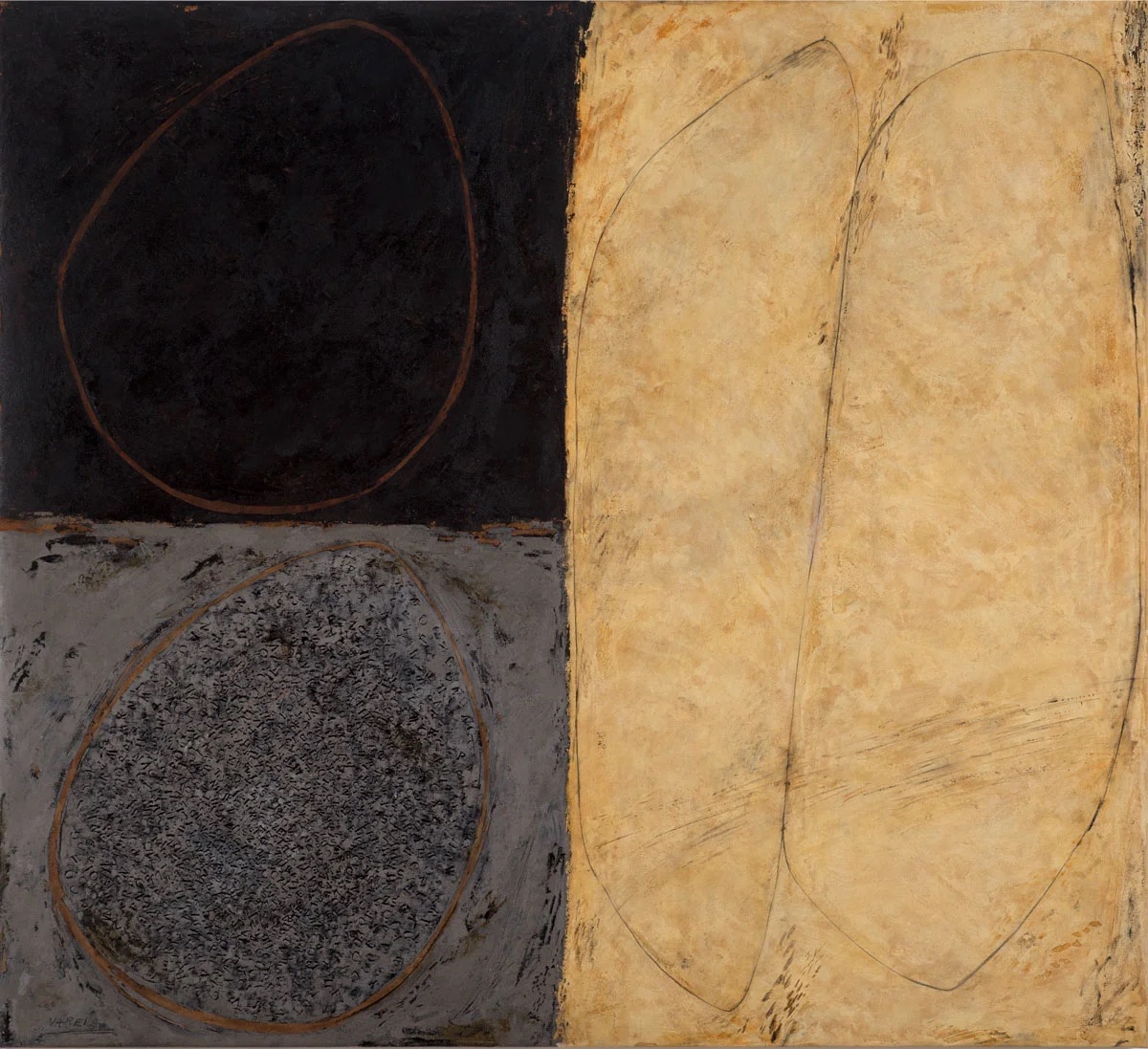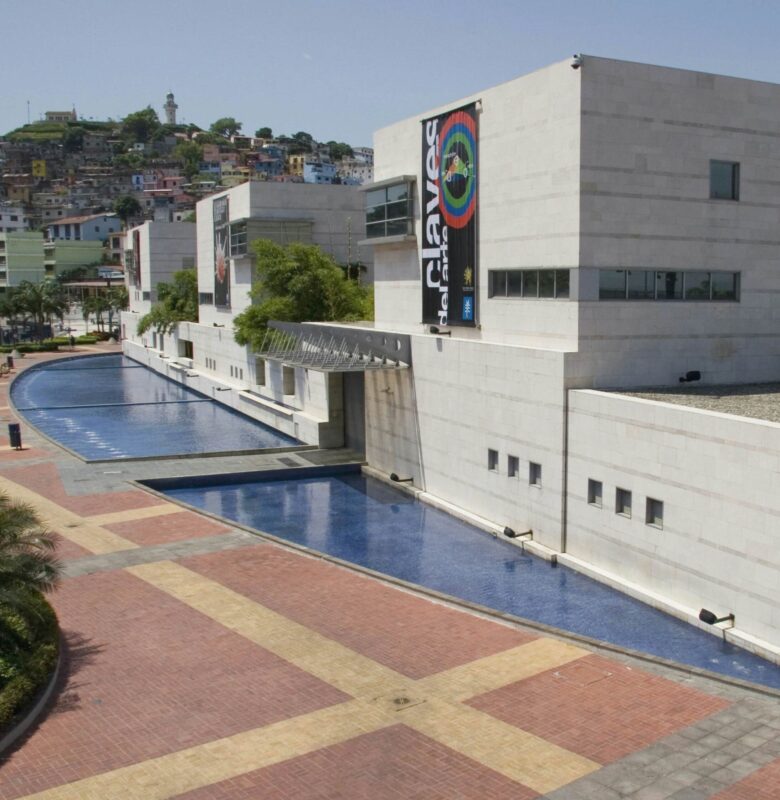I stopped, naturally, at the sentence: I leave to the various futures (not all of them) my garden of forking paths. Almost immediately, I understood; the garden of forking paths was the chaotic novel; the phrase "several futures (not all of them)" suggested to me the image of a fork in time, not in space. A general rereading of the work confirmed this theory. In all fiction, each time a man is faced with various alternatives, he chooses one and eliminates the others; in the work of the almost inextricable Ts'ui Pên, he chooses—simultaneously—all of them. He thus creates various futures, various times, which also proliferate and fork.
Jorge Luis Borges, The Garden of Forking Paths.
Space and time
It would be misguided to discuss visual arts in the Caribbean based solely on the work of one artist, even more so when this production is diasporic in nature and implicated in a complex discourse that simultaneously integrates and transcends the codifications imposed by national or territorial affiliations. These productions, which could serve as a guide, reflect both the concerns and contradictions, as well as the varied and complex cultural references, of a universe of journeys and confluences. Thus, Fernando Varela's artistic production, although contextually framed and geographically determined by the island, goes much further and reveals these encounters between cultural production and the communities in which it is embedded and from which it originates. This determination, therefore, is more than geographical; it is rather an emotional determinism established by Varela's way of seeing things and his attitude toward life.
For many years now, transience has become one of the essential qualities of contemporary art. Transience, in terms of the permanence of the artistic object itself, as well as the immediacy of its contents, which increasingly refer to the imminent, the peremptory. This, far from being a contradictory condition or a reflection that undermines certain avenues for producing meaning, is nothing more than an observation that will allow me to begin my analysis of Fernando Varela's work. According to Zygmunt Bauman, artistic production is subject to the imperatives of transience and uncertainty that characterize today's society. In Liquid Art?, Bauman criticizes certain currents of contemporary art for having an incorrect appreciation of temporality. I quote him when he says that some contemporary artists focus only on "transient events: events that, from the outset, are known to be ephemeral." Varela's work, by contrast, falls into the opposite camp. In a play of juxtaposed studies and observations, Varela focuses on the analysis of permanence, evolution, and philosophical origins from the perspective of the visual arts. He thus occupies a fundamental space within the panorama of contemporary meaning-making in the Caribbean and the Dominican Republic, seeking, through artistic processes, avenues of analysis and answers to questions of a general and universal nature.
The "diverse futures, diverse times, which also proliferate and branch off," which Ts'ui Pên lucidly chose when constructing, in model and word, the Garden of Forking Paths, serves me as a kind of canon for deciphering the most recent paths traveled by Fernando Varela's work. His artistic output is defined by this vastness of symbolic and spiritual references, which could refer to the contemplative, but at the same time is a lucid challenge to the apathetic and linear thought of contemporary times insofar as it continually contradicts it. Each of his canvases or papers poses a perennial spiritual, social, ideological, and consequently, as the container for these reflections is art, aesthetic questioning.
Various futures
For some, speaking of the spiritual today might seem inappropriate, or at least a product of mass-market trends that seek, from a perceptual perspective of popular sensibility, to direct "destinies" and homogenize thought. However, beyond proclaiming the redeeming qualities of artistic production, I prefer to focus, for the present purpose, on spirituality as an instrument, as an "anchoring" tool for understanding, or at least catching a glimpse of, our contemporary reality through artistic production.
Let's take it step by step. To express the spiritual within contemporary artistic practice, we must contextualize the event and its effect on current discourse as one of the most important avenues for addressing issues and critical reflection. Important because it establishes itself as an alternative resource to proclamation, mimesis, and denunciation. Fernando Varela's work embodies this attitude in his artistic production in a revealing way. It's not just about the emergence in contemporary art of a different subjectivity, focused on issues that could be considered intangible and individual. It has more to do, in my opinion, with the paradox of multiple and "accessible" information and the obvious distrust of the apparent, of the visible.
The spiritual component in Varela's work stems from study and meticulous research. Hence, what is translated into his work is categorically profound, yet at the same time—and herein lies one of the great paradoxes of his body of work—of such visual force that it makes issues such as origin and primality visible with astonishing clarity. Take, for example, the first Origen from 1999, a landmark work in the series with the same title: the author considers "that he should return to that path and develop that search to its furthest limits."[i] This return to his previous research makes this body of work the result of spiritual research, yes, but one that borders on anthropological inquiry. Anthropological, in that it ventures into fields of study that address the human being in a comprehensive manner. This body of work makes sense from a variety of perspectives and attempts to encompass the spiritual and biological evolution of our species, as well as development and lifestyles, cosmogonies, and sources of knowledge.[i] Notes by Fernando Varela. July 2010.
Could this meandering of meanings then be a constant, I would say "circular" search for answers and definitions? In Fernando Varela's work, it is. Times, visualizations, and questions converge, defining his artistic form and "appearance" as the artist's research and investigations deepen.
Various times
Time and the way he sequentially structures his body of work are also a prominent feature of Varela's work. Time, in this instance, is assumed to be an omnipresent element that seeps through the interstices of all his other parallel discourses. From time, he speaks of the origin, of what is considered primordial, and demonstrates the intertextuality referred to in the coexistence of chronologies, which is at the same time a simultaneity of discourses. His works not only speak to us of a time; they also reflect, from the present and now, on the circumstances, needs, and conditions under which the notions of present and future were constructed... and, what is more, the possible definitions of a very distant past.
“Time perpetually branches off into innumerable futures,” Stephen Albert tells Yu Tsun in Borges’s The Garden of Forking Paths, and although referring to a particular event[i], this assertion can become another of the analytical references for this work by Varela. It is interesting and even symptomatic that the first Origins were generated from the notion of duality many years ago (more than ten to be exact), and that the artist, in the circularity of his practice, takes them up again to explore them more deeply. [i] This conversation takes place in Borges’s story when Yu Tsun goes to Stephen Albert’s house. Albert refers to the Garden of his ancestor Ts’ui Pen.
Origins and Primary Forms are two independent and interrelated series. One can be considered a consequence of the other, a continuity, but at the same time, their absolute complementarity and parallelism can be considered. The indissoluble links range from the conceptual approaches to the technical resources themselves, which in turn give visual cohesion to the body of work.
In Origins, a series that began—at least in detail and formally—a decade ago and that the artist is currently reactivating and redefining, there are a number of layers of analysis and critical threads that are worth addressing. At first glance, the collection of works appears as a succession of almost taxonomic studies. Each piece is a very distinctive, classificatory exploration of a specific event or object. A fragmented canvas that shows the cosmos and its parts in detail is the first glimpse of this taxonomy of the universe proposed by Varela. The artist presents it as "formal searches that transform into increasingly intimate and symbolic inquiries." But just as classification analyses go from the general to the detail, in the same way the artist formally finds a form that summarizes everything, and poses: “the integration of the oval form as a symbol of origin: that form represents a state: the state of imminence, everything is contained in this form, it is the generative form from which the universe arises, it is the One, the origin, nothingness and everything.”
And once again, in the circularity that defines this artist's work, we return to time. The works that make up this series rhythmically follow the succession of a timeline. But not the time of the clock hands that hang heavily on our wrists, but rather a completely different one. Each stroke, superimposition of gestures, or layer of pigment seeks to reveal another time, imperceptible to those who cannot track it. "The origins tell of development in a cosmic time; they represent the origin of form, space, and time," Varela correctly states.
“Through a process of internal conflict, the Divine Will manifests itself as pairs of opposites, such as will and desire, light and darkness, spirit and matter,” posited Jakob Böhme, one of the philosophers who had the greatest impact on Varela's work. This process of contrast and revelation is what occurs in the pieces in Primary Forms.
The continuity and sequence of the oval shape, developed repeatedly, can be associated with the beads on a necklace, with the deoxyribonucleic acid (DNA) chain, a constant element that forms part of all cells and contains the information necessary for the development and functioning of all organisms. Hence, based on the pattern proposed by the Origins, the artist proposes a parallel and logical continuation of this rhizomatic discourse, where the idea of light as an instrument that reveals realities or truths has great prominence.
In these works, the development of oval and dual forms generated a new graphic style that the artist calls primary forms... "The first forms that originate in cosmic events in time and space. From them will emerge all the infinite forms of spiritual and physical manifestation," Varela notes. I present the idea of the rhizome for this analysis as a descriptive or epistemological model—as developed by Gilles Deleuze—as an "image of thought," based on the botanical rhizome, which grasps multiplicities. Hence, this sequence, from the painterly craft, is visible through the use of monochrome and chiaroscuro... light as a tool. Every so often on the canvas or paper, a point of darkness is evident that functions as a point of resistance, and therefore, a turning point for the development of the other forms that comprise it.
Times that Fork: Fernando Varela's series Origins and Primary Forms run parallel and fork like Ts'ui Pen's garden. Their hallmark is constant movement, a certain evolutionary dynamic that stands out like an almost genetic signature. These series address life, but not everyday existence in its most aberrant simplicity, but rather the life that is produced from resistance, continuity, and light. As Honoré de Balzac said: "Movement due to resistance produces a combination that is life itself."

